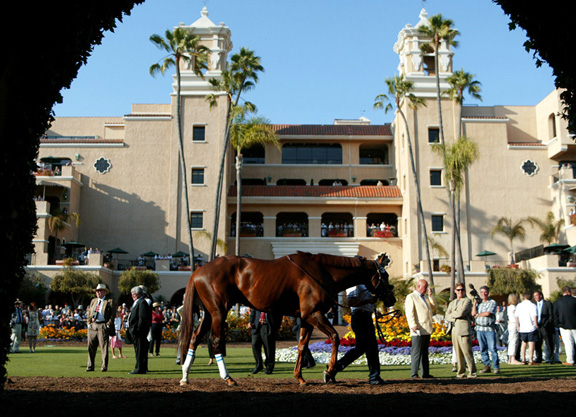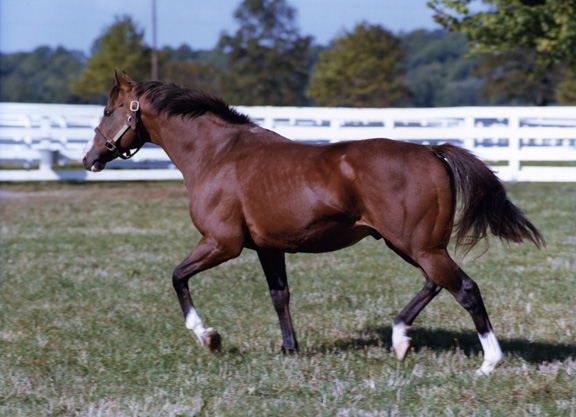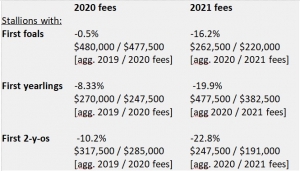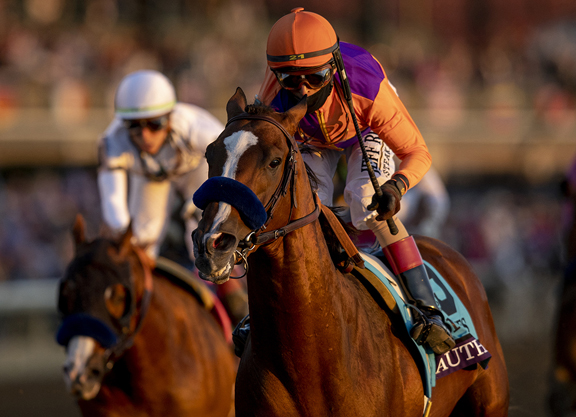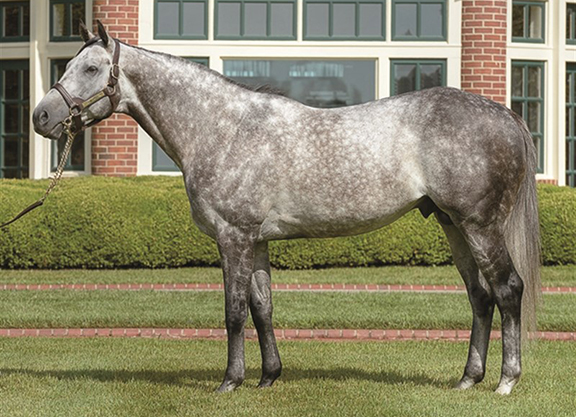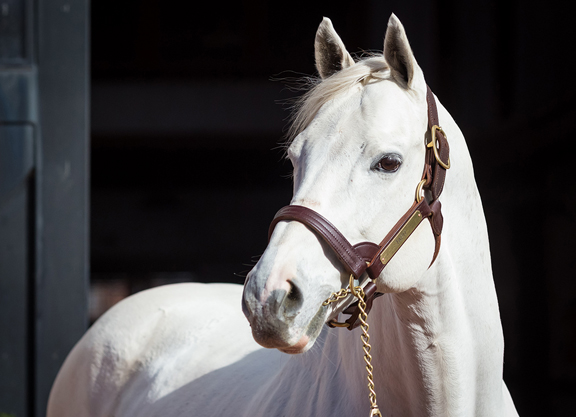We all trust that life must be better in 2021. But the immediate question is whether it will be ‘Good’ or maybe ‘Sweet’?
Right now, I’d settle for either. But it certainly looks an auspicious coincidence that the first race to sharpen focus on the Triple Crown trail–the opening leg of an adventure that reliably sustains us year in, year out–should include, among just five runners, one colt named Life Is Good and another out of Life Is Sweet (Storm Cat).
Their respective trainers, Bob Baffert and John Shirreffs, dominate the GIII Sham S. with two runners apiece. This, of course, was the race Baffert aptly chose last year to show that Authentic might just be the real deal. What a goofy animal he remained then, almost colliding with the rail as he hesitated to explore the overwhelming capacities lurking within. Despite virtually pulling himself up in the stretch, he won by nearly eight lengths: a spectacular overture to a campaign that will presumably see him formally anointed, later this month, as Horse of the Year.
The only colt ever to beat Authentic–if Swiss Skydiver (Daredevil) will indulge us a fairly technical distinction–was saddled by Shirreffs. Honor A.P. (Honor Code) seemed to do so on merit, too, but fortune scowled at him thereafter. As noted in our ongoing survey of Kentucky sires, Honor A.P.’s subsequent derailment (in running that extraordinary race behind Authentic in the Derby) does at least give breeders access to perhaps the most physically bewitching Thoroughbred of his crop at one-fifth the fee of Authentic.
Life Is Good arrives with a beguiling resemblance to Authentic, as another son of Into Mischief to have started out winning a sprint maiden at Del Mar in November. He did so in such flamboyant fashion, in fact, that Breeders’ Cup champion Essential Quality (Tapit) has suffered the indignity of being supplanted as the first horse named in the Derby futures pool. Certainly Life Is Good seems able to melt the stopwatch with little observable effort: the challenge here, much as was the case with Authentic, is to start stretching the trademark Into Mischief speed towards Classic distances. Baffert describes him as very aggressive, and an attempt to get him to rate didn’t really come off in a workout before Christmas. But these obviously remain very early days.
Success breeds success, and Baffert has earned the right to become a standard destination for a $525,000 Keeneland September machine like this. How interesting, then, to see Life Is Good accompanied by a horse of a wildly unfamiliar profile: Medina Spirit is by Protonico and was a $1,000 short yearling, pinhooked by Christy Whitman for $35,000 as a 2-year-old back at OBS this past summer. If he can upset in this race, he will give breeder Gail Rice hope that 2021 may yet prove every bit as remarkable as 2020, when Speech (Mr Speaker)–a filly she bred from a $7,500 mare–won the GI Ashland S.
Anyhow, the force certainly remains with this record-breaking barn, which also houses a monster with the potential to dominate the older horses this year, judging from that staggering comeback by Charlatan (Speightstown) in the GI Runhappy Malibu S. As such, possibly Shirreffs can feel some empathy with the horse whose memory is honored in this race. What a time to be a self-effacing genius training in California!
Sham is famously thought to have run the second-fastest Derby in history, but was unfortunately foaled in the same crop as the fastest of them all in Secretariat. He came back, moreover, with two front teeth dangling grotesquely from his jaw after slamming his head against the gate. What a wonderful horse he was: as statuesque as he was brave. Spared the attentions of Big Red, Sham won the GI Santa Anita Derby in 1:47 flat. And how skillfully he was prepared for the Classics by Frank ‘Pancho’ Martin, whose horsemanship was inherited by his late son Jose, trainer of the flying Groovy (Norcliffe); and in turn by his grandson Carlos–as evinced in the career of Grade I winner Come Dancing (Malibu Moon), who missed almost her whole sophomore year but has shown unfailing appetite as a nine-for-19 millionaire.
Both Sham and Secretariat were out of Princequillo mares. So, too, was Kris S.–the damsire of Life Is Sweet, saddled by Shirreffs to win the GI Ladies’ Classic the same year Zenyatta (Street Cry {Ire}) beat the gentlemen at the Breeders’ Cup.
For Shirreffs to try Life Is Sweet’s son Waspirant (Union Rags) in a Grade I straight after breaking his maiden speaks rather better for his potential than did his performance on the day. Barnmate Parnelli (Quality Road) apparently arrives on a more positive curve, having run both Hot Rod Charlie (Oxbow) and Spielberg (Union Rags)–rivals that have amplified the form in the meantime–close before finally breaking his maiden.
Shirreffs saddled the disappointing favorite against Spielberg in the GII Los Alamitos Futurity S., Red Flag (Tamarkuz), who had previously romped in the GIII Bob Hope S. But one way or another, it’s good to see him with several youngsters standing up to Baffert in his own backyard. None appears to have quite the charisma of Honor A.P., from this remote vantage anyway, but what I do know is that they are in the very best of hands.
The past five Sham winners include four subsequent Grade I winners in Authentic, McKinzie (Street Sense), Gormley (Malibu Moon) and Collected (City Zip): three for Baffert, one for Shirreffs. You can be pretty confident, then, that what this field lacks in quantity will be redeemed in quality. Earlier winners Goldencents (Into Mischief) and Tapizar (Tapit) later confirmed an affinity for the track in winning the GI Breeders’ Cup Dirt Mile; while Colonel John (Tiznow) returned to win the Santa Anita Derby on his way to the GI Travers S.
But the name that resonates right now, from the roll of honor, is 2006 winner Bob And John (Seeking the Gold). Though actually named for Stonerside owner Bob McNair and manager John Adger, this race reminds us that another Bob, for all his fantastic achievements, is not the only show in town–even on the West Coast. Yes, he’s the greatest showman. But he will absolutely respect the understated John who takes him on again today.
In fact, if 2021 is really going to be a better year, then there could hardly be a happier symbol than the induction of Shirreffs, however appalled by the attention, into a Hall Of Fame whose members will surely feel their own distinction diminished until it is shared by him. In this era of industrial numbers, he remains a professor of the old school, and recent inductees like Mark Casse and Steve Asmussen have duly banked far more prizemoney. Likewise Todd Pletcher, who becomes eligible for induction this year. Per starter, however, Shirreffs has earned $16,132 compared with scores of $18,043, $10,002 and $7,755 respectively for Pletcher, Casse and Asmussen. Take Zenyatta out of the equation, moreover, and Shirreffs would still be at $13,852.
The best measure of a champion is the rival who does not permit him complacency, even in his own dominion. That was true of Secretariat and Sham. And it’s true of Bob and John.
The post This Side Up: John Keeps Bob Honest In Sham appeared first on TDN | Thoroughbred Daily News | Horse Racing News, Results and Video | Thoroughbred Breeding and Auctions.
